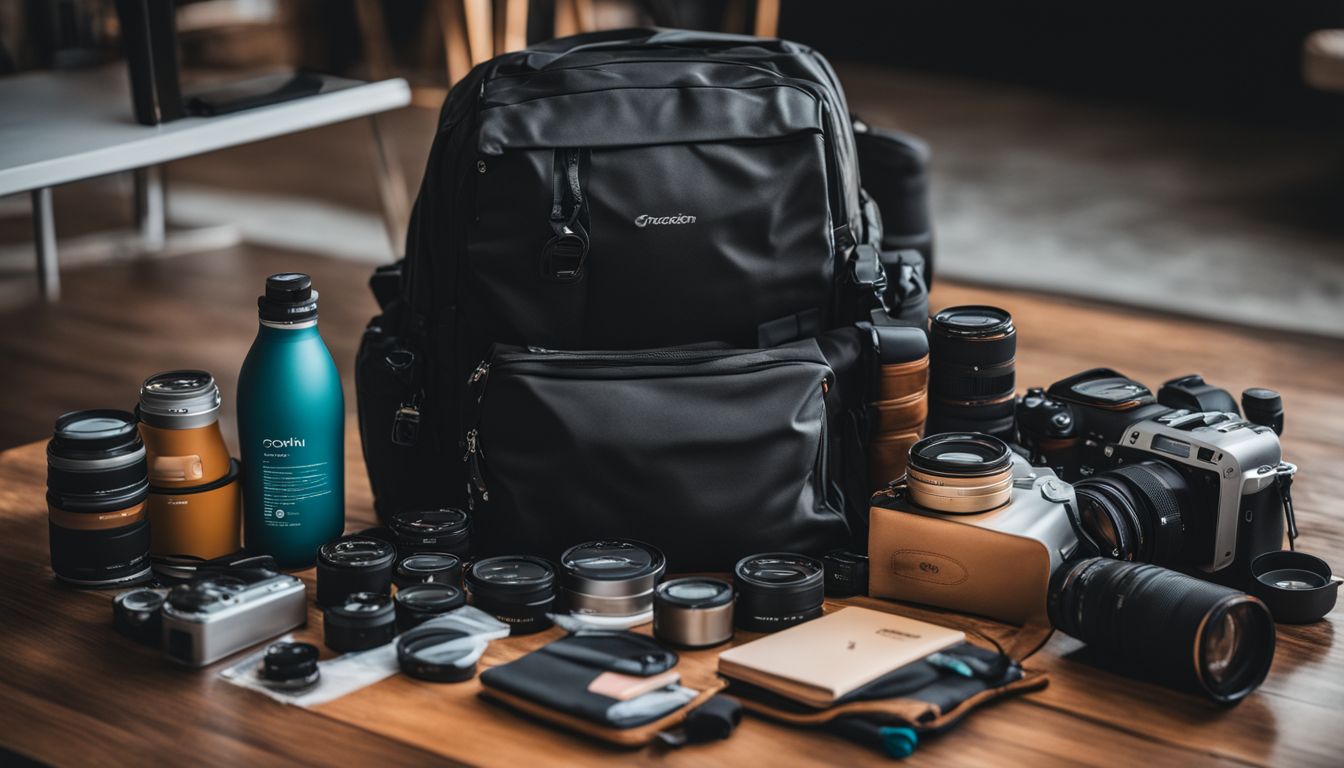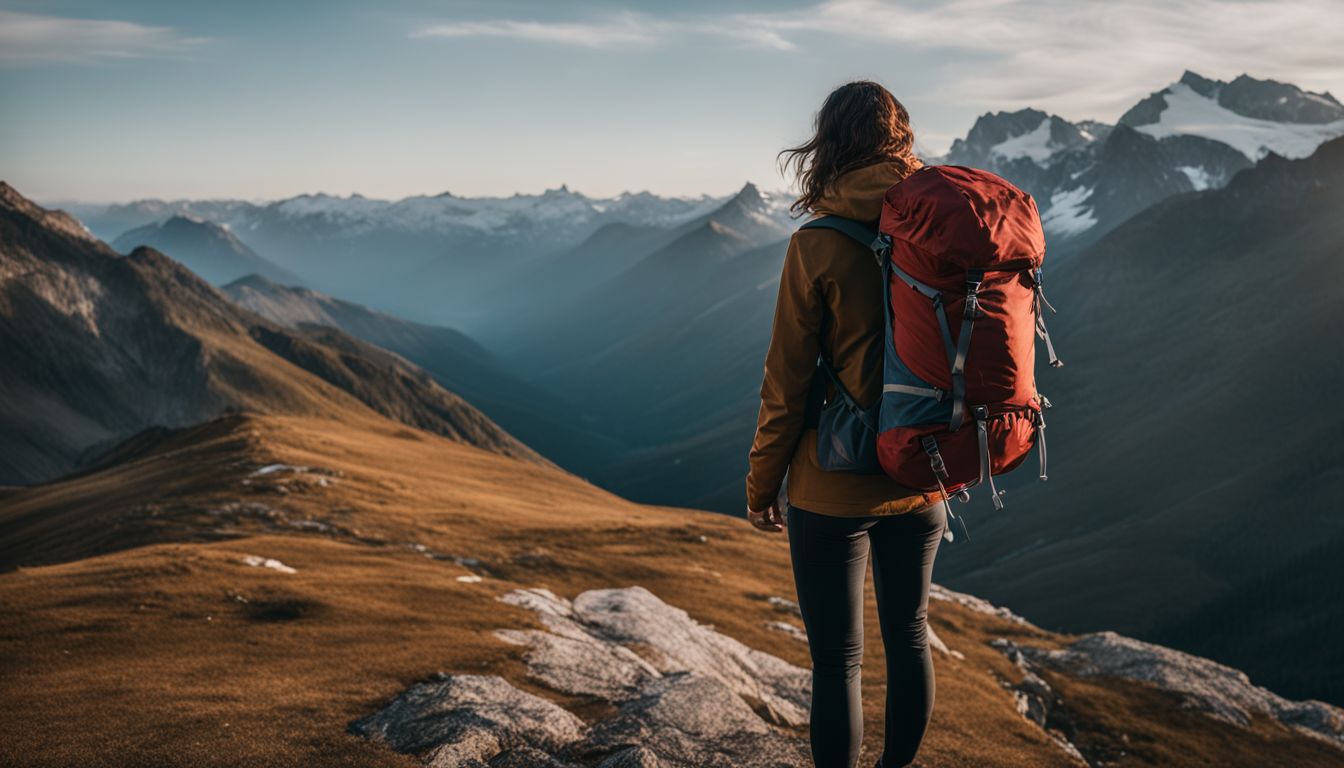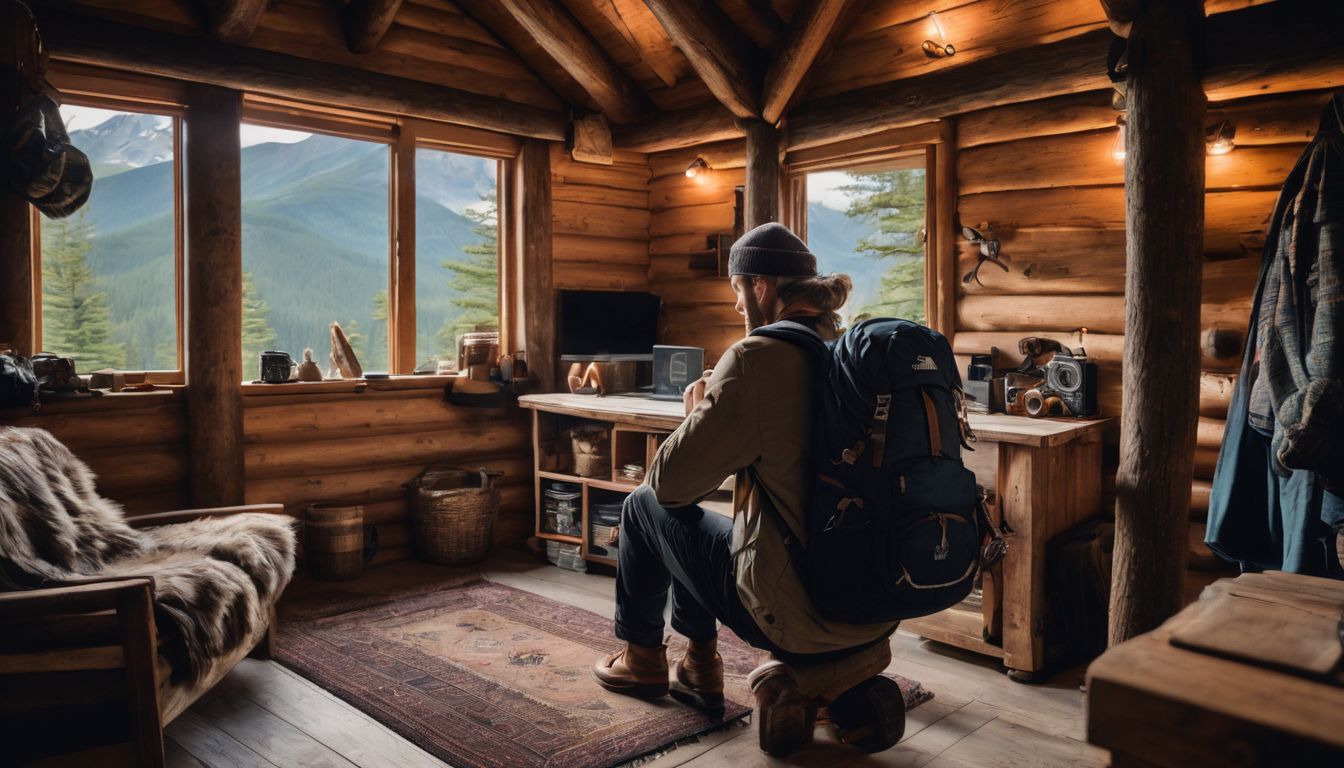Embarking on a journey through diverse climates presents a unique challenge: creating a single backpack that can weather all elements. As an adept wanderer with years of packing experience, I understand the complexity behind harmonizing gear for both sweltering deserts and chilly highlands into one rucksack.
My expeditions across continents have honed my ability to pack smartly and effectively, ensuring readiness for any temperature twist.
This expertise is distilled into powerful strategies you’ll uncover here. Did you know that utilizing space-saving techniques like packing cubes can revolutionize your travel organization? This blog unveils methods tested by time and terrain to elevate your packing game, promising you’ll depart with confidence no matter where the compass points.
Dive in to demystify multi-climate preparations!
Key Takeaways
- Always create a detailed packing list including base layers, insulating layers, quality outerwear, multipurpose pants, extra socks and underwear, and bathing suits to be ready for any climate.
- Utilize lightweight and packable outerwear made from quick-drying materials for multi-climate trips to minimize luggage weight without compromising on preparedness.
- Select versatile footwear that can serve multiple purposes while prioritizing comfort and support. Embrace space-saving strategies such as packing cubes for organization and minimalism by eliminating non-essential items from your packing list. Also ensure to keep your rucksack secure by using locks or slash-proof material.
The Art of Versatile Packing for Multi-Climate Trips

When preparing for a trip that will take you through various climates, the key is to pack smart and versatile. This means creating a detailed packing list, checking weather forecasts in advance, and choosing items that can serve multiple purposes.
With the right approach, you can ensure you have everything you need while still traveling light and efficient.
Start with a Detailed Packing List
Packing for different climates can seem tough. A detailed packing list will make sure you bring everything you need without overpacking. Here are items to include:
- Base layers: Pack some light, moisture-wicking tops and bottoms. These stick close to your skin and keep you dry when it’s hot or warm when it’s cold.
- Insulating layers: Bring a cozy fleece or sweater that traps heat. You’ll need this for chilly places.
- Quality outerwear: Find a good jacket that shields you from wind and rain. It should be easy to carry and pack away.
- Multipurpose pants: Choose pants that can work in many situations. Some zip-off into shorts are perfect for changing weather.
- Extra socks and underwear: Always have a few pairs of each. You want them breathable and quick-drying.
- Bathing suits: Don’t forget these if you’re heading somewhere with water fun.
Check Weather Forecasts in Advance
Looking at weather forecasts before your trip is smart. It helps you know what clothes and gear to bring. If you’re going where it changes a lot, like hot during the day and cold at night, this step is really important.
You want to be comfy and ready for anything.
You might go to a festival or special event on your trip. Check the weather so you can have fun without worrying about rain or too much sun. Bring things that work well in wind and rain, like a good coat or hat.
Use the forecast to choose clothes that do more than one thing. A jacket that keeps you dry but also folds up small is great for this. Always think about how each item will help with different kinds of weather.
Knowing what’s coming makes packing easier and your trip better!
Mastering the Layering Technique

Choose your layers carefully to ensure that you’re prepared for both warm and cold climates. Opt for lightweight, packable outerwear that can provide wind and rain protection when needed.
Choose Layers Wisely for Warm and Cold Climates
Picking the right clothes for a trip with many climates can be tricky. Here’s how to layer up smartly and stay comfy no matter the weather.
- Start by packing garments that can work as your base layer, such as moisture-wicking T-shirts or long-sleeve tops. These keep you dry by pulling sweat away from your skin.
- Add mid – layers like fleece pullovers or lightweight sweaters. They trap warmth on cooler days but can easily come off when it’s hot.
- Look for double duty clothing. A zip – off pant converts into shorts and saves space in your pack.
- Select outer layers that fight wind and rain. A good raincoat or a compact windbreaker can shield you from unexpected storms.
- Consider fabrics that dry quickly and breathe well, so you stay fresh during active days and easily wash and wear on the go.
- Keep an eye out for pieces that fold small but puff up big, like down vests or jackets. They offer excellent warmth without taking much room.
- Bring a cozy hat, gloves, and scarf set for extra protection when chilly winds blow through.
- Opt for clothes with plenty of pockets to stash small items safely while exploring different places.
- Lastly, always have a pair of sunglasses and sunscreen ready to protect against strong sun rays no matter where you are.
Opt for Lightweight, Packable Outerwear
When packing for a trip with varying climates, choosing lightweight and packable outerwear is essential. Look for versatile items like a compact rain jacket that can serve both as a layer for warmth in colder places and as protection from unexpected rain showers.
This not only saves space but also reduces the weight of your rucksack, allowing you to pack more efficiently.
In addition, consider selecting clothing made from lightweight and quick-drying materials. These materials are highly practical in multi-climate trips as they are easy to wash and dry quickly, ensuring that you always have fresh clothing available without needing to carry excessive amounts.
Embracing these choices will help keep your luggage light while providing ample options for different weather conditions throughout your journey.
Footwear for Every Occasion
Choose shoes that can serve multiple purposes, such as comfortable walking shoes that can also be dressed up for a night out. Selecting versatile footwear will save space in your rucksack and ensure you’re prepared for any type of climate or activity.
Selecting Shoes That Serve Multiple Purposes
When packing for multiple climates, it’s important to choose shoes that can serve various purposes. Here’s how you can select the right footwear:
- Look for high – quality shoes designed to perform well in different weather conditions and terrains. This means choosing durable materials and versatile designs.
- Opt for comfortable and functional shoes that can transition seamlessly from outdoor activities to more formal settings. Versatility is key when selecting footwear for multi-climate trips.
- Consider investing in a pair of ballet flats that are not only stylish but also comfortable enough for long walks or casual outings. A good pair of ballet flats can be a versatile addition to your shoe collection.
- Prioritize lightweight and packable footwear options that won’t take up too much space in your rucksack, allowing you to pack efficiently for your trip.
- Ensure that the shoes you choose provide adequate support and protection, especially if you’ll be engaging in outdoor activities such as hiking or walking on various terrains.
- Keep in mind the “3 pairs of shoes” rule popular among frequent travelers, which suggests packing two pairs of functional and comfortable shoes along with one pair that’s a little more stylish but still versatile.
Space-Saving Packing Strategies
Utilize packing cubes for organization and embrace minimalism by following the rule of elimination, allowing you to efficiently pack for multi-climate trips with ease. Learn how these strategies can make your travels stress-free!
Utilize Packing Cubes for Organization
Packing cubes are a must-have tool for staying organized and maximizing space in your rucksack while traveling. They enable you to compress belongings into easy-to-pack sizes, making it easier to manage your clothes while on the go. Here’s how packing cubes can help you pack efficiently:
- Create a Packing System: Utilize different-sized packing cubes to organize various items such as clothing, accessories, and toiletries separately.
- Maximize Space: Use packing cubes to neatly arrange and stack your clothes within your rucksack, ensuring efficient use of available space.
- Facilitate Easy Access: Packing cubes allow you to reach specific items without having to disrupt the entire contents of your bag.
- Simplify Unpacking: Keep different types of clothing separated for easy unpacking upon reaching your destination.
- Stay Organized Throughout Your Trip: As you move from place to place, keep everything tidy by using packing cubes to store used and unused items separately.
- Reduce Wrinkles: Folding clothes neatly in packing cubes can help minimize wrinkles and creases during transit.
- Adapt to Changing Weather: Pack different types of clothing in separate cubes so that you can easily access what is needed based on the climate at each stop on your journey.
Embrace Minimalism: The Rule of Elimination
When it comes to efficient packing, embracing minimalism is key. It’s about carefully considering what you truly need for your trip and eliminating anything that doesn’t serve a critical purpose.
Embracing minimalist travel means choosing multi-functional items and letting go of unnecessary belongings. Minimalist travel packing isn’t just about fitting everything into a small bag; it’s also about simplifying and decluttering your life.
Minimalist travel involves thoughtful elimination – removing the excess, redundant, or seldom-used items from your packing list. This approach not only lightens the load but also streamlines your travel experience, making it easier to move from one place to another without feeling encumbered by an abundance of possessions.
Security Tips for Packing Your Rucksack
When packing your rucksack for multi-climate trips, here are some important security tips to keep in mind:
- Keep your valuable belongings secure by using a lock or small padlock on the zippers of your backpack.
- Consider investing in a slash – proof backpack or insert a metal mesh into the fabric to prevent theft.
- Conceal any extra straps or dangling cords to avoid them getting caught during transit and potentially causing damage.
- Always keep important documents and electronics in a waterproof pouch or bag to protect them from unexpected rain or spills.
- Prioritize personal safety by carrying a whistle, portable alarm, or other safety devices that can easily be reached in an emergency situation.
- Be cautious when sharing information about the contents of your bag with strangers to avoid drawing unwanted attention or potential security risks.
Conclusion and Final Tips for Efficient Packing
In conclusion, mastering the art of rucksack packing for multi-climate trips is a practical and efficient way to travel. With careful planning and versatile packing, it’s possible to conquer varying weather conditions without overpacking.
By emphasizing layering techniques and selecting multipurpose footwear, you’ll be prepared for any climate. Remember that space-saving strategies like packing cubes and embracing minimalism can make a significant impact on your trip.
Before embarking on your adventure, ensure your rucksack is securely packed with the essentials for a stress-free journey. Safe travels!
For more detailed guidance, don’t forget to read our essential security tips for packing your rucksack before you embark on your journey.
FAQs
1. What is a layering strategy for trips with different weather?
A layering strategy means packing clothes that you can wear on top of each other to stay warm, or take off when it gets hot.
2. Why should I use a layering strategy in my rucksack?
Using a layering strategy helps you be ready for cold or warm weather without having too many clothes.
3. Can I pack light and still be ready for any climate?
Yes, by choosing clothes that work well together, you can pack fewer items and be ready for any weather.
4. What are the most important layers to bring?
Make sure you have a base layer like t-shirts, a warm middle layer like sweaters, and an outer layer like a waterproof jacket.

